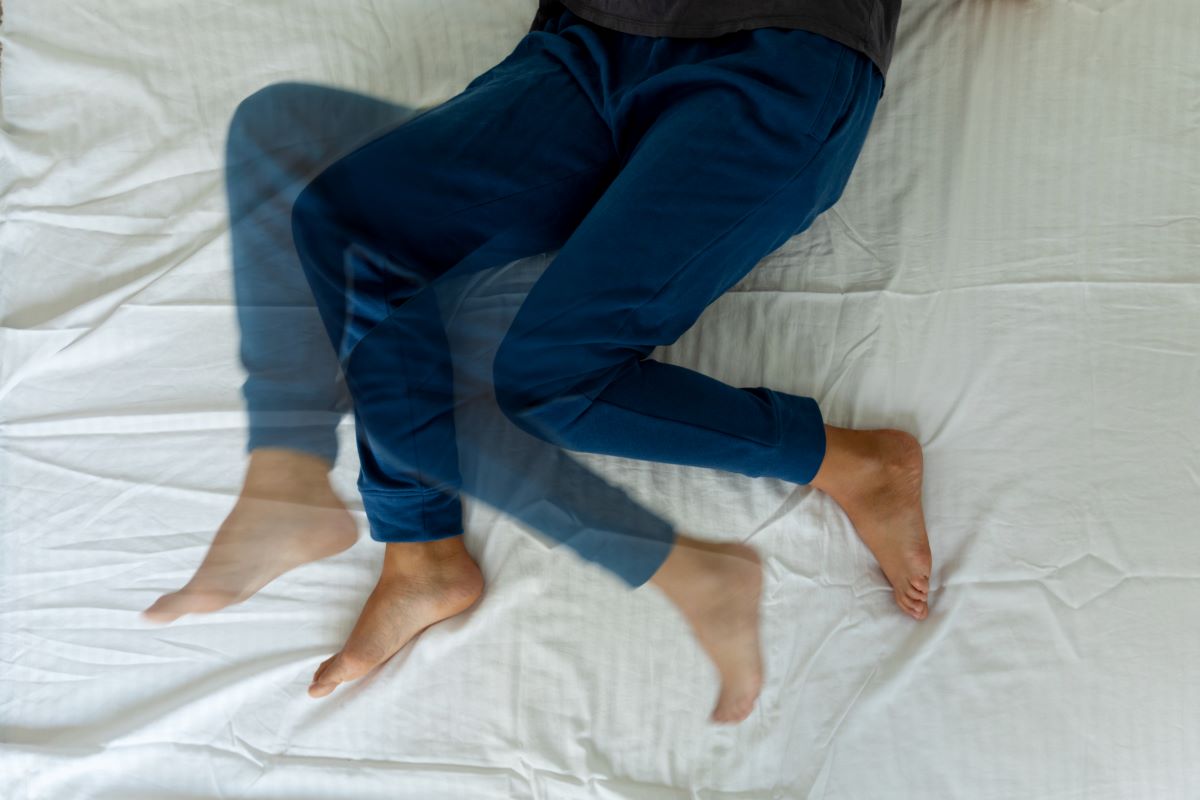Specialist Advice — 8 minutes
Periodic limb movements in sleep (PLMS)
As one of the abnormal movements that disrupt the process of falling asleep or sleeping, periodic limb movements in sleep (PLMS) involve repetitive contractions of the legs – and sometimes the arms – about every 20 to 40 seconds during the night. Most often, extension of the big toe and flexing of the foot, sometimes accompanied by flexing of the knee and hip, cause micro-arousals that result in fragmented sleep and may lead to daytime sleepiness. People who suffer from this condition are not aware they are moving, but these involuntary movements may disturb their partners, who feel as though they are being kicked.

PLMS, which affects between four and 11% of the population, can strike at any age, but is most common in people over the age of 65.[1] This disorder can exist alone, but often occurs in those with restless legs syndrome (RLS). It can also accompany other sleep disorders such as sleep apnea, insomnia and narcolepsy.
Causes of PLMS
There is no known cause for so-called primary PLMS. These movements are thought to be related to abnormalities in the regulation of nerves running from the brain to the limbs, but the exact nature of these abnormalities is unknown.
The disorder also occurs in a secondary form, meaning that it results from a variety of factors, including other sleep disorders, chronic illnesses, iron deficiency, the use or withdrawal of medications (including antidepressants), as well as the use of drugs.
Diagnosis
Because these movements occur during sleep, people with PLMS are not aware of them. It is often their partners who notice the symptoms. During the medical consultation, the physician will ask questions to better understand the sleep problems and determine if they may be caused by another condition or deficiency. A blood test or other tests may be done to identify the causes.
If the physician suspects PLMS, they will send the patient to a sleep centre for a polysomnography. This test is the only way to confirm the diagnosis of PLMS, since limb movements are recorded, and rule out a secondary cause such as sleep apnea.
Treatment
In the case of secondary PLMS, the physician will attempt to treat the underlying problem. For example, they may prescribe supplements for iron deficiency, substitute a medication that caused the disorder, or treat the disease that is causing the PLMS.
If the PLMS are primary, treatment may include a combination of lifestyle changes and medication. If symptoms are mild or moderate, lifestyle changes may be all that is needed to reduce them. These may include regular exercise, good sleep hygiene, stress management techniques such as yoga or meditation, and avoiding caffeine, alcohol and nicotine.
If symptoms are frequent or severe, the physician will likely prescribe a medication from the following categories:
- Dopaminergic agents, which act on dopamine receptors in the brain to reduce leg movements
- Anticonvulsants or antiepileptics, which control involuntary leg movements
- Sedatives, such as benzodiazepines, which help improve sleep. These are usually reserved for the most severe cases because of their addictive potential and side effects, including daytime sleepiness.
For professional support, we’re here for you.
We provide services that can help your doctor diagnose sleep disorders and determine the appropriate treatment.
- Polysomnography level 1-AASM (in laboratory)
- Home sleep test
- Sleep Care services
- Sleep hygiene program
- Online boutique
You have a question about an equipment? Chat online with our respiratory therapists.
Sources1
- VETRUGNO, Roberto, and Pasquale MONTAGNA. “Periodic Limb Movements: Diagnosis and Clinical Associations,” Practical Neurology, March-April 2009, https://practicalneurology.com/articles/2009-mar-apr/PN0309_01-php.








